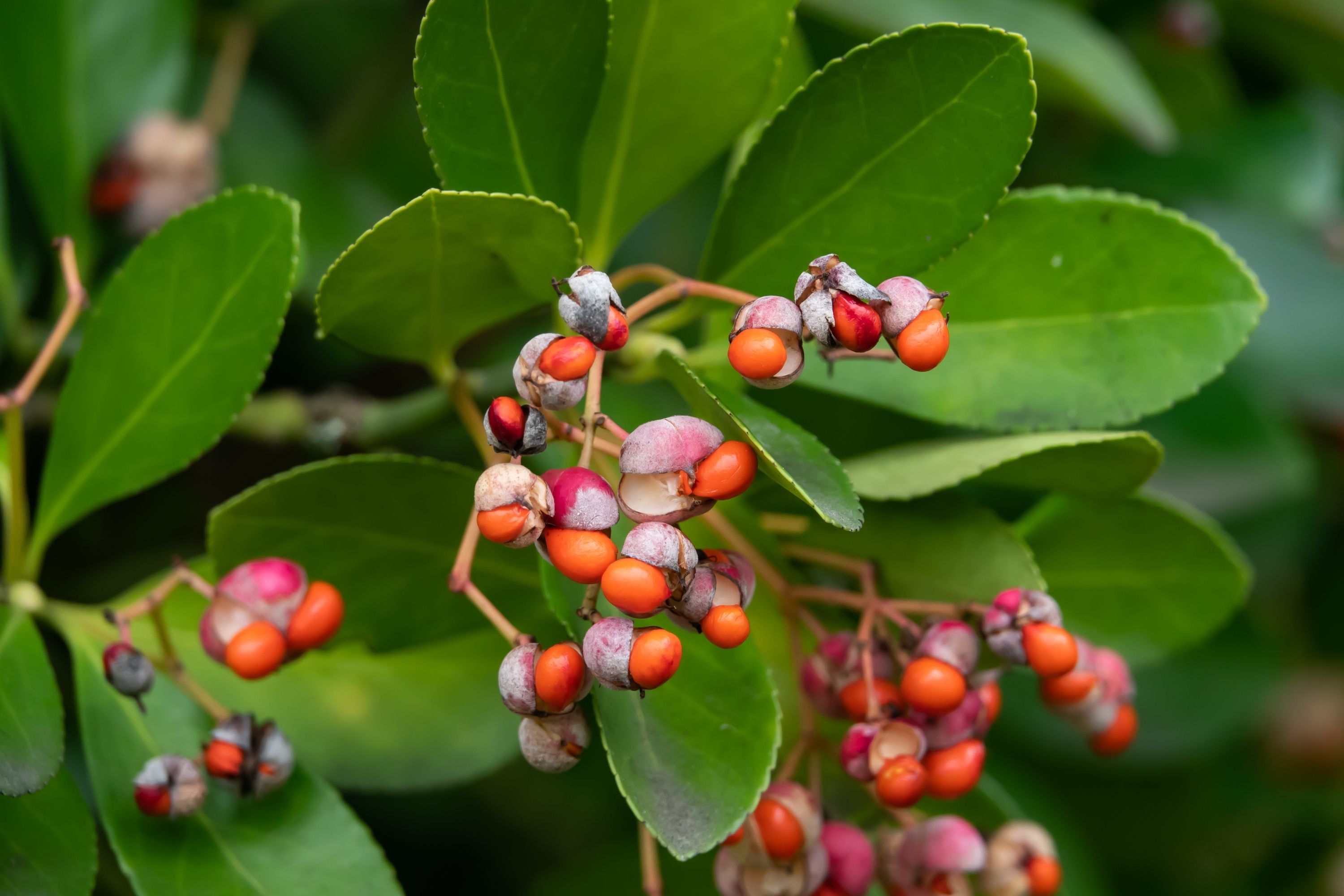Japanese spindle
(Euonymus japonicus)

Description
Euonymus japonicus is an evergreen shrub that belongs to the Celastraceae family. It is commonly known as Japanese spindle, and it is native to Japan, Korea, and China. This ornamental plant is highly valued for its attractive foliage, which is shiny, dark green, and leathery. It is also popular as a hedge plant due to its dense growth habit and its ability to tolerate pruning. In this article, we will discuss the taxonomy, growth habit, cultivation, and common uses of Euonymus japonicus. Taxonomy: The scientific name of Euonymus japonicus is Euonymus japonicus Thunb. The genus Euonymus is a group of about 180 species of shrubs, climbers, and small trees that are found in temperate regions of the world. Euonymus japonicus is a member of the Celastraceae family, which is also known as the bittersweet family. This family includes about 1300 species of woody plants that are distributed in tropical and temperate regions. Description: Euonymus japonicus is a slow-growing, evergreen shrub that can reach a height of 3 to 6 meters (10 to 20 feet) and a spread of 2 to 4 meters (6 to 12 feet). It has a dense, bushy growth habit, and its branches are erect and stiff. The leaves of Euonymus japonicus are oval-shaped, leathery, and shiny. They are about 3 to 7 centimeters (1 to 3 inches) long and 1 to 3 centimeters (0.4 to 1.2 inches) wide. The leaf margins are smooth, and the leaf tips are pointed. The leaf color is dark green, but the new growth may have a slightly lighter shade of green. Euonymus japonicus produces small, inconspicuous, greenish-white flowers in late spring to early summer. The fruit is a capsule that contains 1 to 4 seeds. The seeds are covered with a fleshy, bright red aril that is attractive to birds. Cultivation: Euonymus japonicus is a hardy plant that can grow in a wide range of soil types, including clay, loam, and sand. It prefers a well-draining soil that is slightly acidic to neutral (pH 5.5 to 7.0). It can tolerate full sun to partial shade, but it prefers a location that receives morning sun and afternoon shade. It is also tolerant of salt spray and pollution, making it suitable for coastal areas and urban environments. Euonymus japonicus is drought-tolerant once established, but it prefers regular watering during the growing season. It can be propagated from seed or cuttings, but cuttings are the preferred method because they produce a plant that is identical to the parent. Uses: Euonymus japonicus is a versatile plant that has many uses in the landscape. It is commonly used as a hedge plant because of its dense growth habit and its ability to tolerate pruning. It can also be used as a specimen plant, a screen, or a foundation planting. Euonymus japonicus is also a popular container plant because of its attractive foliage. It is often used in mixed plantings with other evergreen shrubs or perennials. The bright red arils of the fruit are attractive to birds, making Euonymus japonicus a useful plant for wildlife gardens. In conclusion, Euonymus japonicus is an attractive and versatile plant that has many uses in the landscape. It is a slow-growing, evergreen shrub that can tolerate a wide range of growing conditions.
Taxonomic tree:







